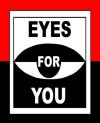

| Visitors Now: | |
| Total Visits: | |
| Total Stories: |

| Story Views | |
| Now: | |
| Last Hour: | |
| Last 24 Hours: | |
| Total: | |
To Reach Afghans, Pentagon Drafts Mimes, Storytellers, Wizard of Oz
The Pentagon’s ultimate team of technologists is looking to looking to bridgethe cultural divide in Afghanistan — with storytelling, pantomime and the Wizard of Oz.
After nine years of conflict, the U.S. military is still having trouble finding common ground with warzone locals. One way to fill that breach, Darpa figures, is through “interactive stories.”
Counterinsurgency, in many ways, is a series of negotiations — over economic development, over security, over political power. And “negotiation,” Darpa explains in a new request for information, “is best served by a culturally-specific narrative that explains why we hold a position, how it relates to other parties, and how it affects all parties both positively and negatively.”
Darpa’s tales are part of a larger Defense Department push to get smarter about the battlefield’s “human terrain.” Teams of social scientists are now embedding with combat units; Pentagon-funded researchers are building computer models of how the societies of Afghanistan and Iraq work; military pollsters are trying to tap public opinion in the conflict zones.
To come up with its storytelling tools, Darpa’s Information Processing Technologies Office is hoping to go beyond its usual cadre of neuroscientists, artificial intelligence specialists, and gadgeteers. The agency also wants contributions from “art, literature, film, dance, games development, advertising and public relations, advertising, grass roots organizing, collective decision making or any other discipline for which the respondent can make an argument that the approach bears on this task.”
Continue Reading “To Reach Afghans, Pentagon Drafts Mimes, Storytellers, Wizard of Oz” »
Read More LINK`http`www.wired.com/dangerroom/#ixzz0rtuSl5nJ`margin-top: 0px; margin-right: 0px; margin-bottom: 0px; margin-left: 0px; padding-top: 0px; padding-right: 0px; padding-bottom: 0px; padding-left: 0px; color: rgb(0, 51, 153); text-decoration: none; outline-style: none; outline-width: initial; outline-color: initial; `LINK


